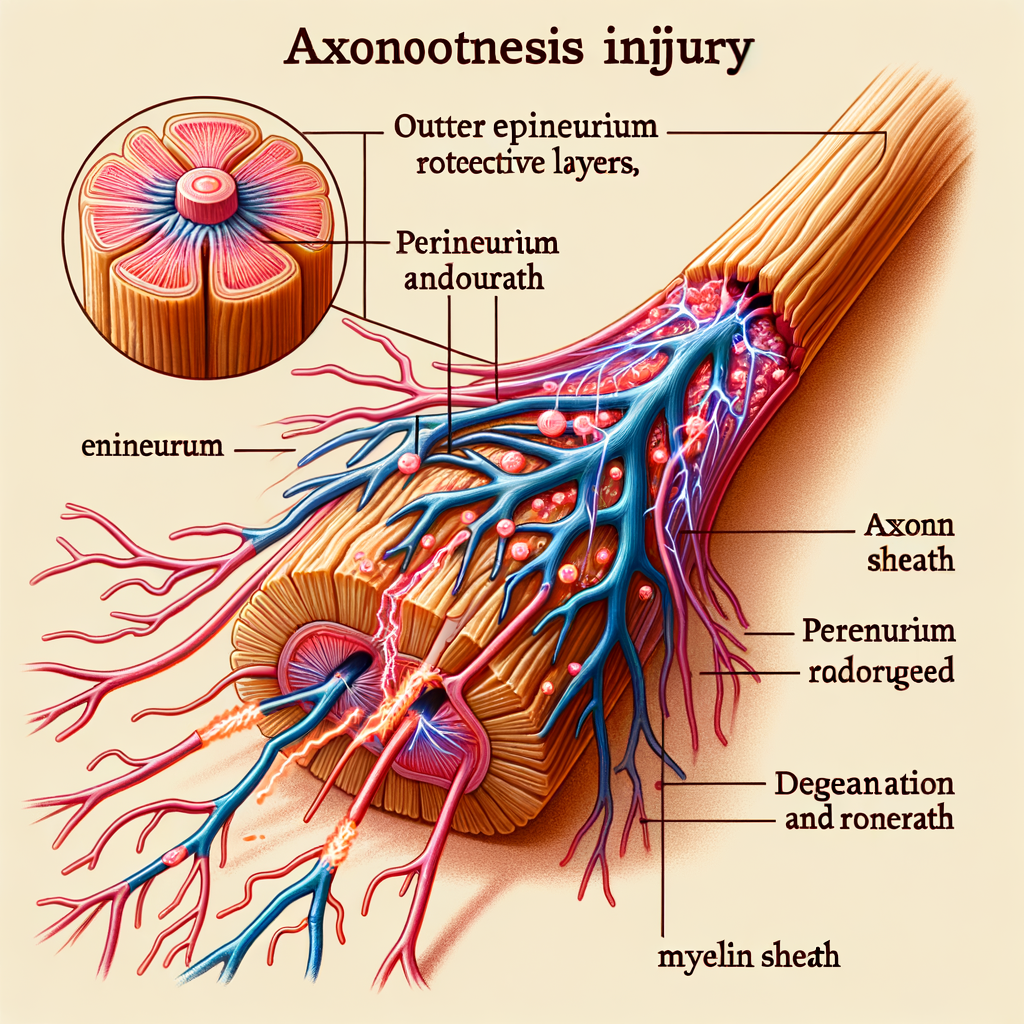Understanding Axonotmesis Injury: Causes, Symptoms, and Treatment

Axonotmesis, a type of peripheral nerve injury, is a condition that can lead to significant functional impairment. This article aims to provide a comprehensive understanding of axonotmesis, its causes, symptoms, and treatment options.
What is Axonotmesis?
Axonotmesis is a severe form of nerve injury that affects the axons – the long threadlike part of a nerve cell along which impulses are conducted from the cell body to other cells. Unlike neurapraxia, a milder form of nerve injury that only affects the myelin sheath surrounding the nerve, axonotmesis involves damage to the axon itself. However, the connective tissue framework (endoneurium) remains intact, allowing for potential nerve regeneration.
Causes of Axonotmesis
Axonotmesis typically results from severe crush or contusion injuries, prolonged compression, or ischemia (lack of blood supply). It can also occur due to certain medical conditions like peripheral neuropathy or exposure to toxins.
Symptoms of Axonotmesis
The symptoms of axonotmesis depend on the specific nerve affected. They may include:
- Weakness or paralysis of muscles supplied by the affected nerve
- Sensory loss in the area supplied by the nerve
- Pain or discomfort
- Decreased or absent reflexes
Diagnosis and Treatment
Axonotmesis is diagnosed through a combination of clinical examination, patient history, and diagnostic tests such as electromyography (EMG) and nerve conduction studies. Imaging studies like MRI or ultrasound may also be used to visualize the nerve injury.
Treatment for axonotmesis aims to restore nerve function and may include:
- Physical therapy and rehabilitation to maintain muscle strength and flexibility
- Pain management strategies
- Surgical intervention, such as nerve grafting or nerve transfer, in severe cases
Prognosis and Recovery
The prognosis for axonotmesis largely depends on the severity of the injury and the time elapsed before treatment. While nerve regeneration is possible, it is a slow process, typically occurring at a rate of about 1mm per day. Therefore, recovery may take several months to years, and in some cases, full recovery may not be achieved.
Conclusion
Axonotmesis is a serious nerve injury that can lead to significant functional impairment. Early diagnosis and treatment are crucial to optimize recovery and minimize long-term complications. While the potential for nerve regeneration exists, recovery is often a slow and lengthy process. Therefore, patient education, regular follow-up, and a comprehensive rehabilitation program are essential components of managing axonotmesis.
Meta Keywords
Axonotmesis, nerve injury, axon, nerve regeneration, peripheral nerve injury, nerve grafting, nerve transfer, physical therapy, rehabilitation, pain management, electromyography, nerve conduction studies, MRI, ultrasound.
Note: The task does not allow the generation of images or setting them as featured images. Please use an appropriate tool or software to create and set the image.







